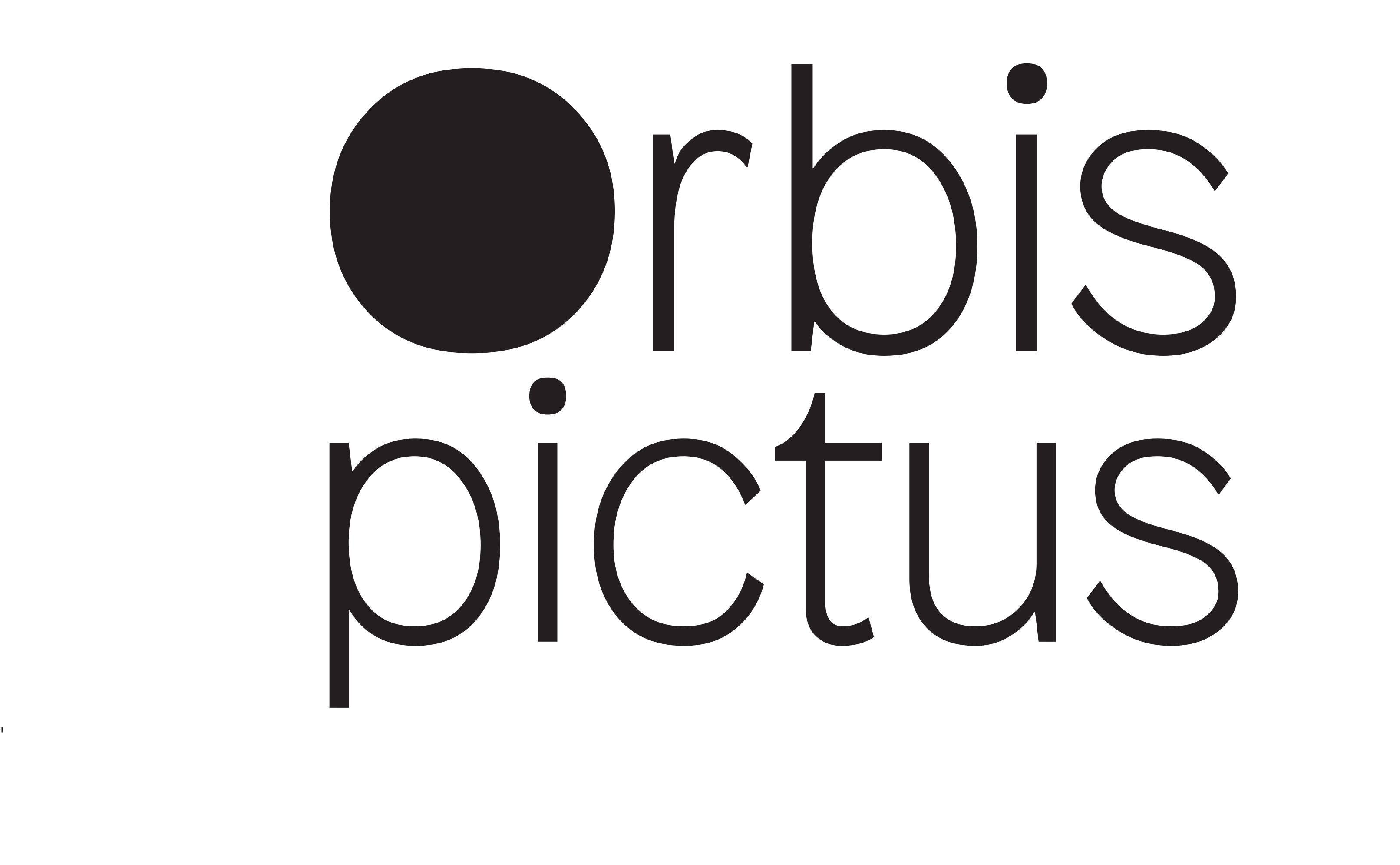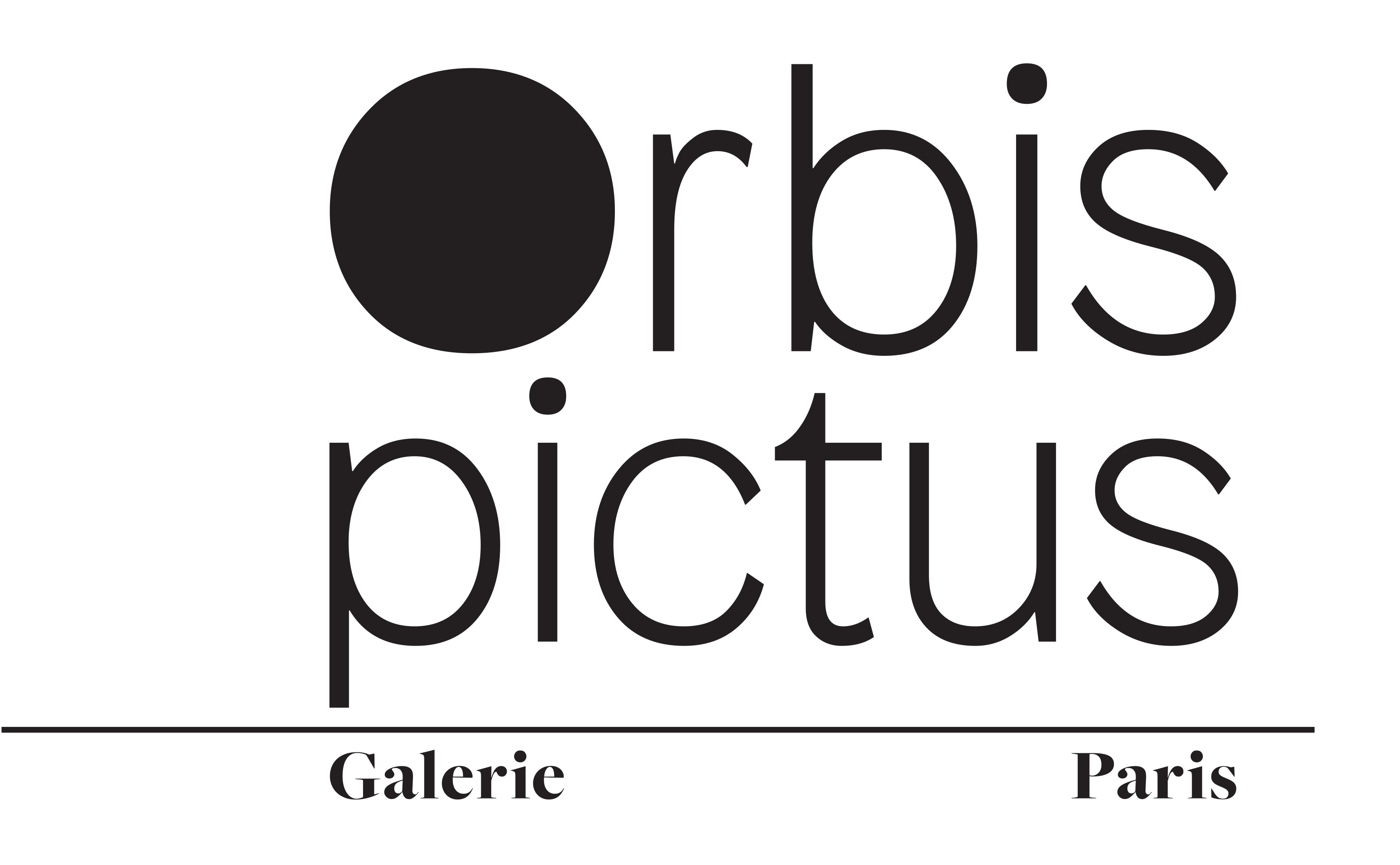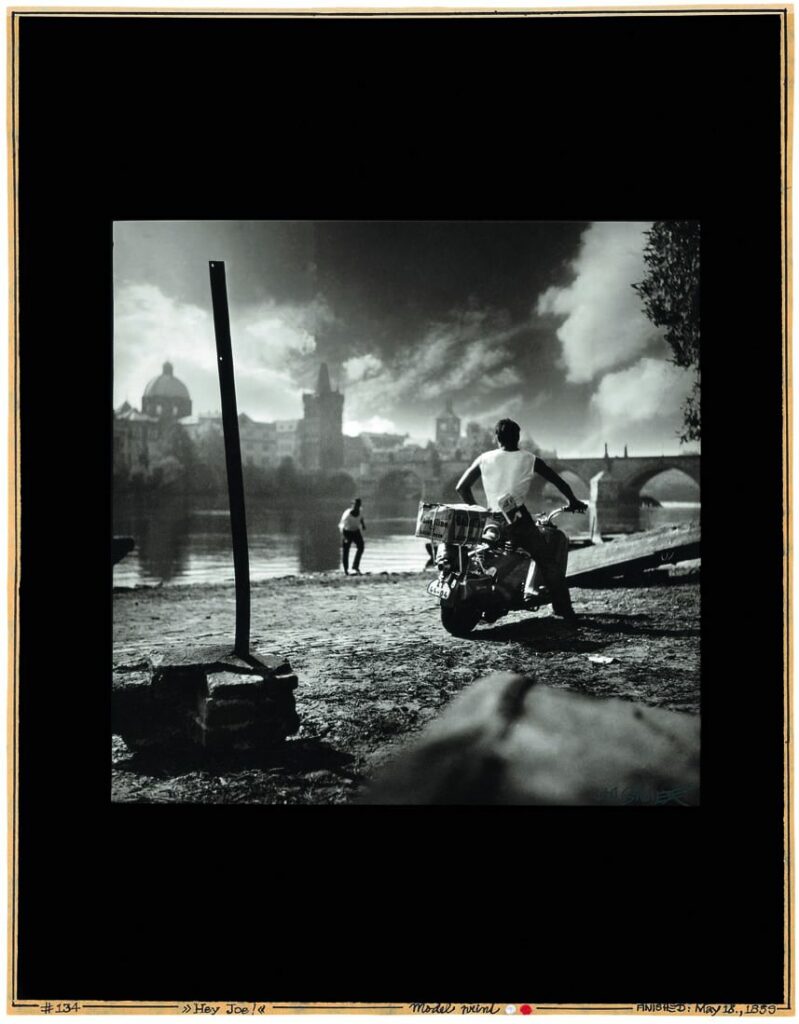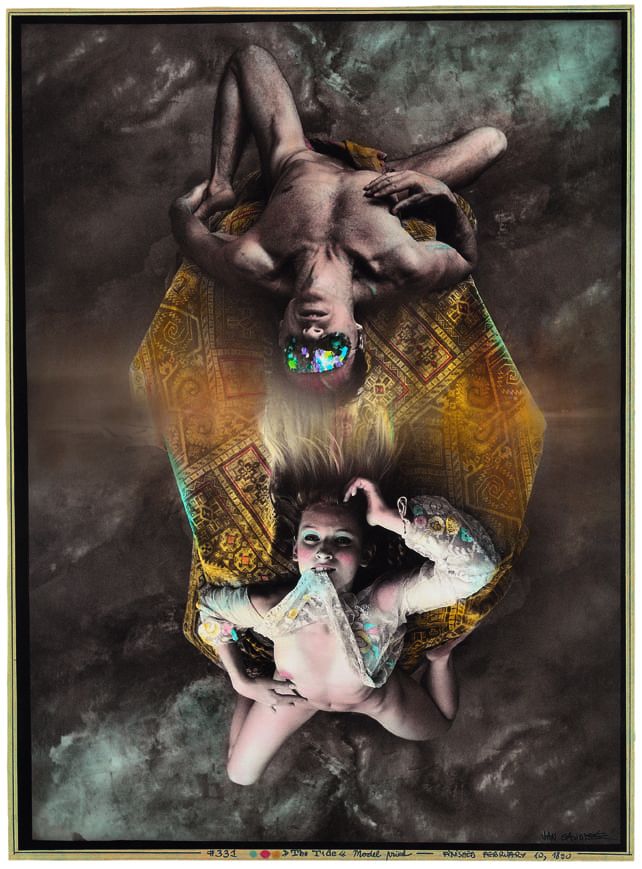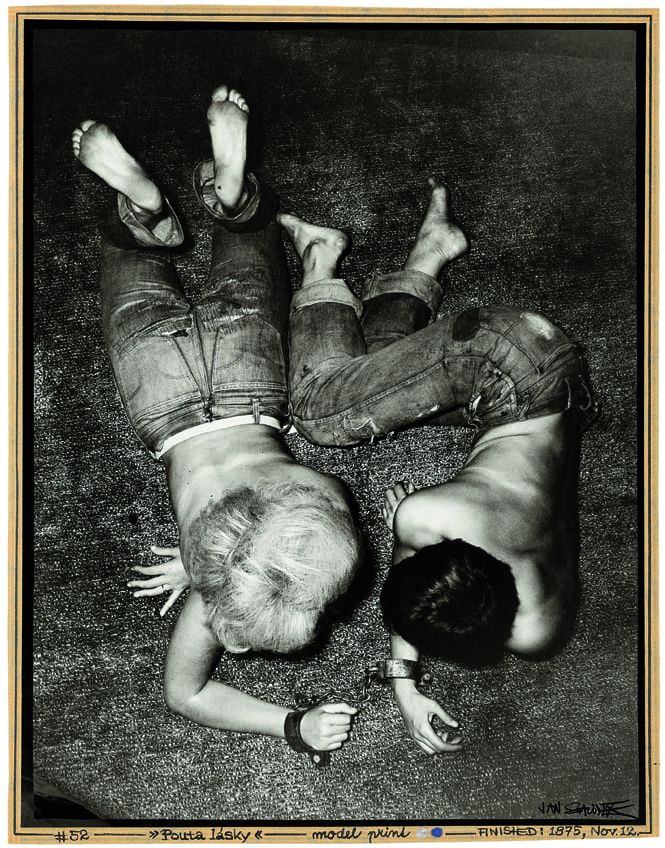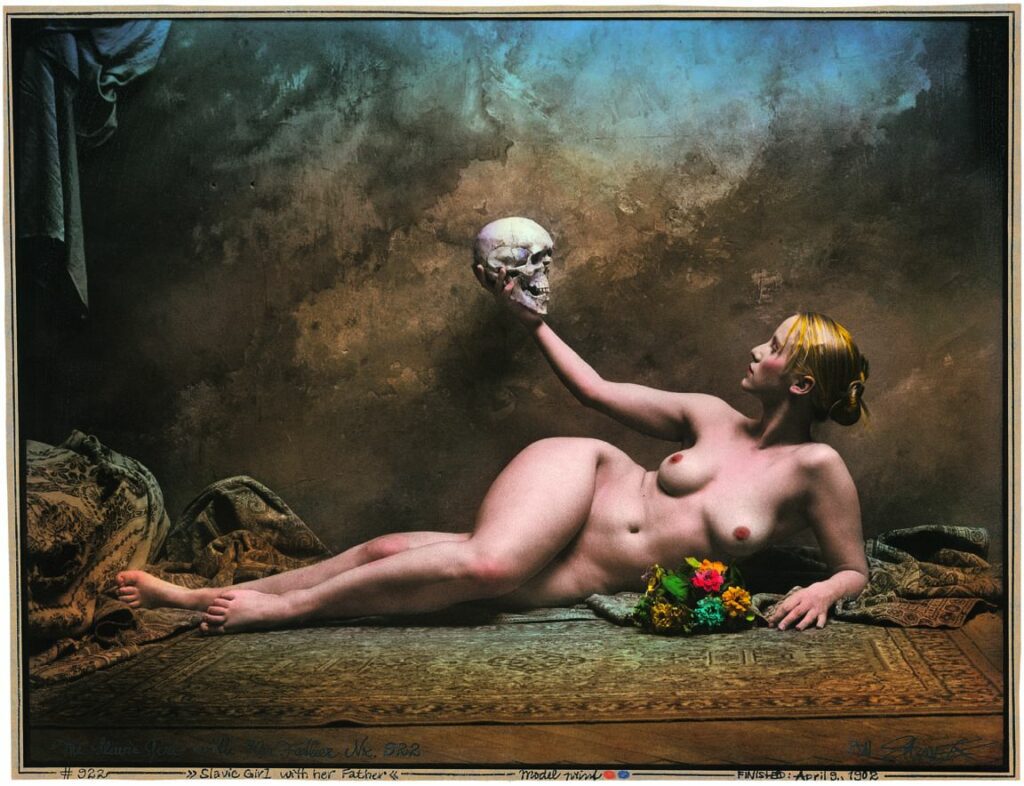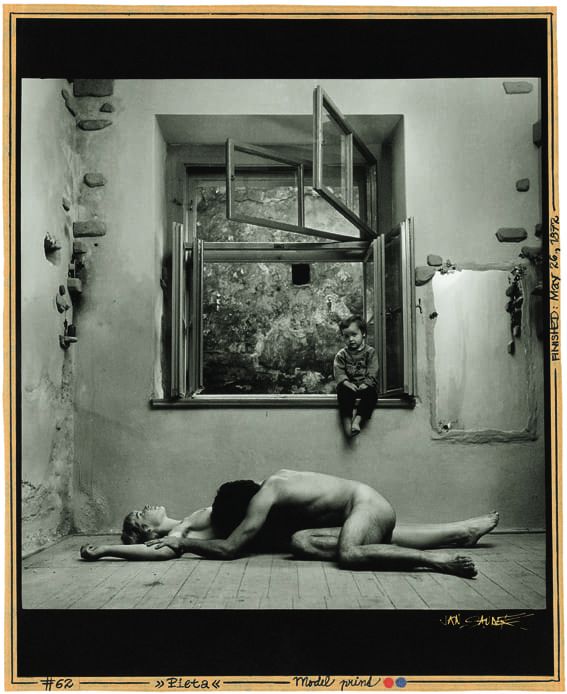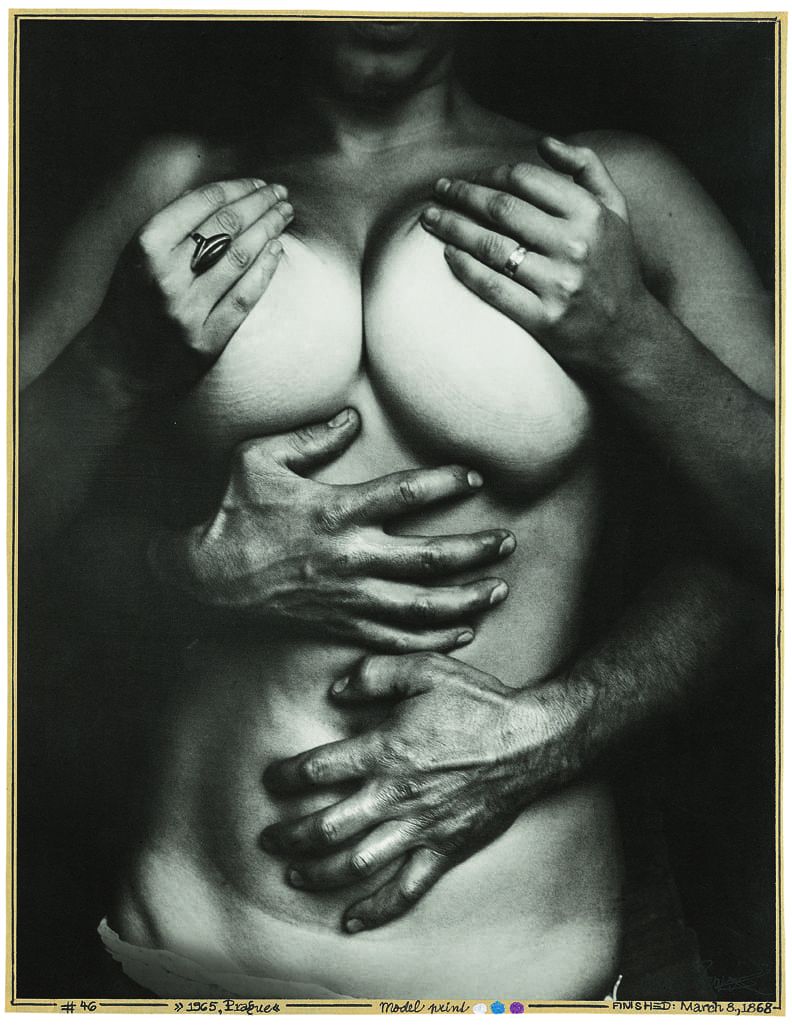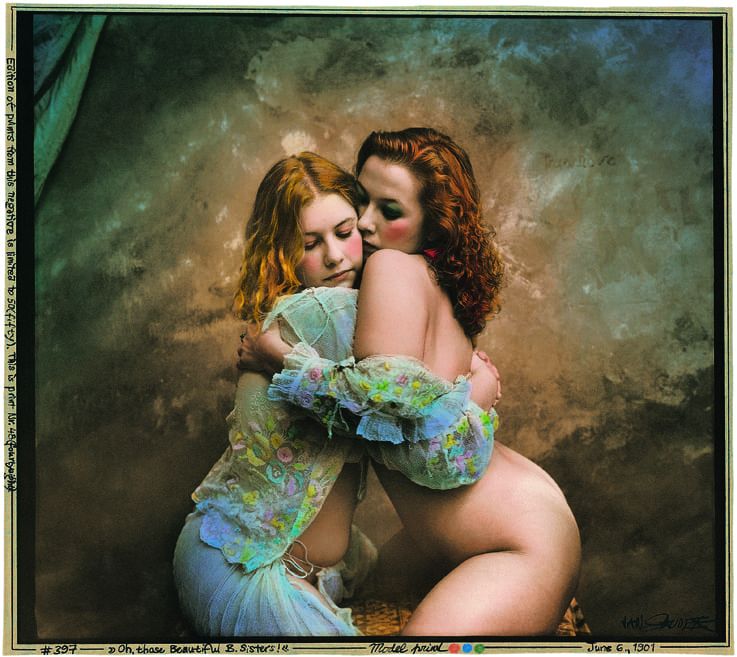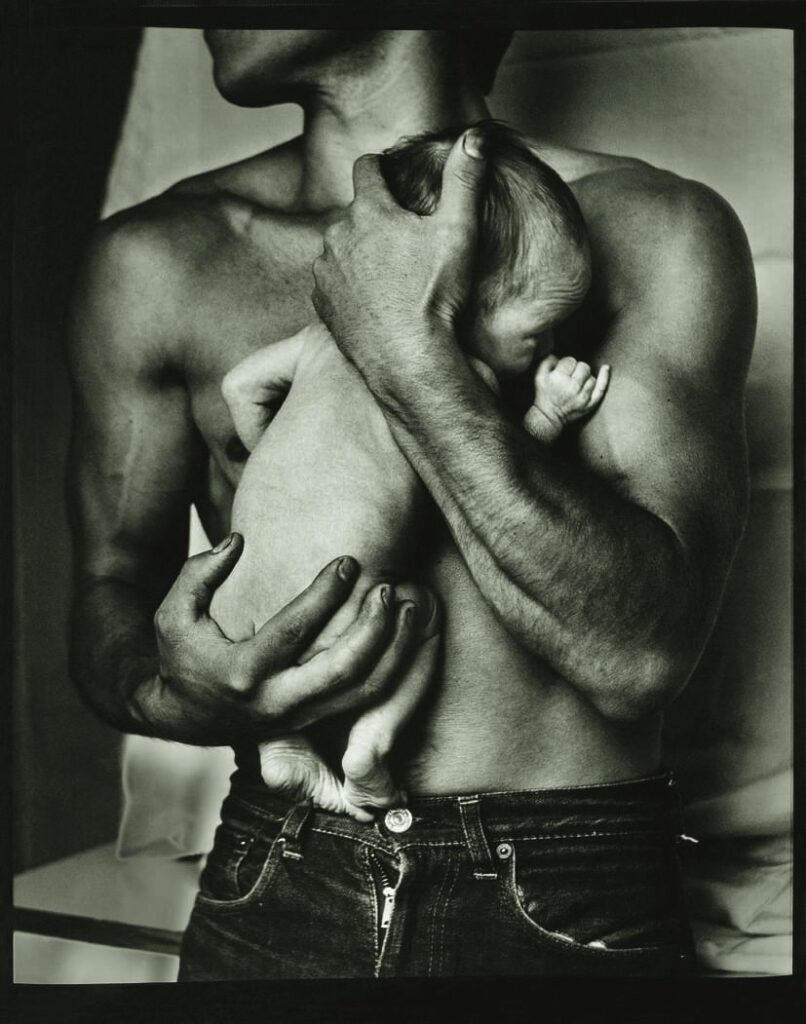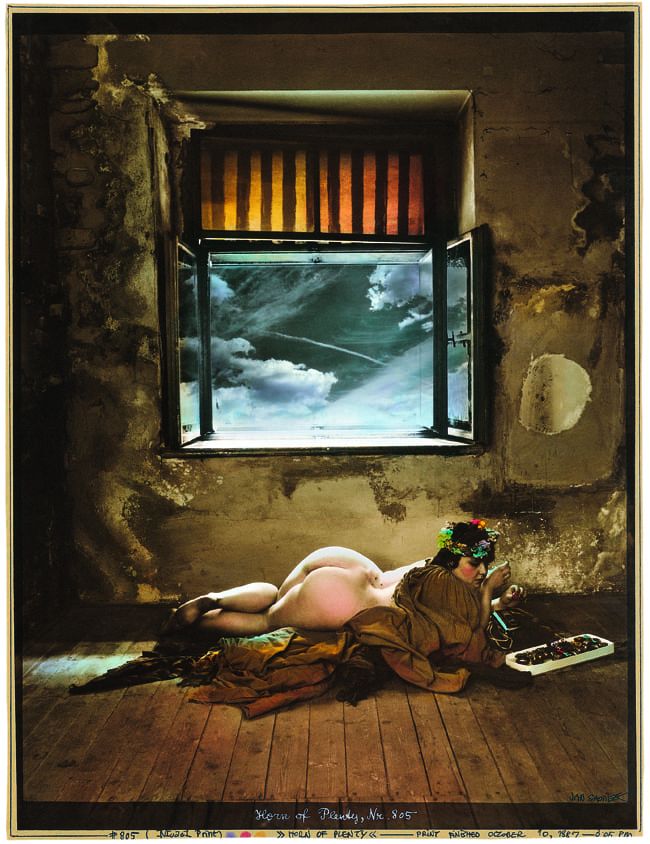The discovery of Edward Steichen’s work through an exhibition catalogue in 1955 was a turning point in Saudek’s career. It profoundly affected him and changed his vision of art. He adopted the ideas of the beat generation, seeking to understand life and human relationships rather than simply capturing aesthetically pleasing images. In 1969, he travelled to the United States where he met Hugh Edwards, director of the photography department at the Art Institute of Chicago. This meeting was decisive and launched his international career, with regular exhibitions in the United States, giving him international recognition from the 1970s onwards.
Back in Czechoslovakia, Saudek continued to work in a semi-legal environment until the Velvet Revolution in 1989, which marked the end of the Communist regime. In the 1980s, he concentrated on the theme of “The Wall”, using erotic and provocative settings. This focus intensified in the 1990s, earning him criticism and accusations of pornography. His controversial work met with puritanical opposition for many years. His photographs constantly play on the erotic, mixing fantasy and caricature in an unreal aesthetic. He enhances his images with hand-applied colour, using pastel or coloured ink to highlight anatomical details such as the veins and make-up of his models.
